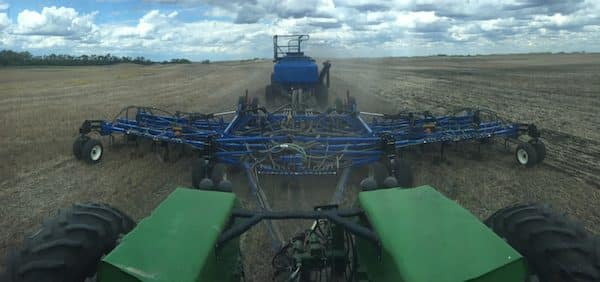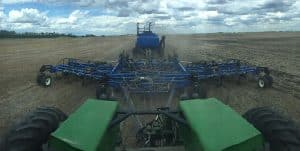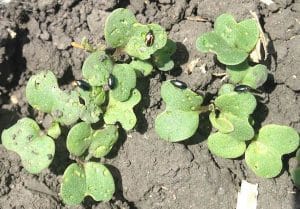Take time and seed right. Canola growers have four good economic reasons to focus on good seed placement:
1. Consistent canola seed placement at a uniform depth improves seed survival and the return on seed investment. Targeting 5 to 8 plants per square foot gives the crop a better chance to meet its yield potential.
2. A crop with quicker canopy closure can eliminate the need for a second in-crop herbicide application.
3. A stand at the higher end of the recommended 5 to 8 plants per square foot leaves growers a little leeway when it comes to disease and insect management decisions, knowing that losing a plant or two per square foot will not reduce yield potential.
4. A uniform plant stand of 5 to 8 plants per square foot could mature a little faster than a thinner stand, which will branch out more. The more branches, the longer it takes for all seeds to mature. READ MORE
Use the Canola Calculator to determine the ideal seeding rate. If yield potential is reduced and growers want to manage costs, a target stand at the low end of the recommended range of 5 to 8 plants per square foot might be the better economic decision. The new seed cost feature at the Canola Calculator will help canola growers set seeding rates that balance agronomy and economics.
The ideal time to seed canola. Data suggest that for most of the Prairies, seeding canola the first, second or third week of May will result in similar yields. MASC data show that other crops may benefit more from early seeding. How early is too early?
Seeding into dry soil. Topsoil conditions are quite dry in many fields across the Prairies. This raises a few questions:
- Should I seed now or wait for the moisture situation to improve? Seed the most frost tolerant crops in your rotation now. Take advantage of suitable seeding days and get the crop in the ground. We have to assume (or is “hope” the better word) rains will come and if they don’t stop for a couple of weeks, seeding may face costly delays.
- What seed-placed fertilizer rate is appropriate in dry conditions? Dry conditions increase the risks from fertilizer damage to seed and seedlings. Take extra care in dry conditions to limit seed-placed fertilizer to no more than 20 lb./ac. of phosphate. Again, leave a couple checks in fields where you turn off your seed-placed fertilizer for 50 to 100 feet. When you evaluate this strip later in the year, you’ll have actual evidence to evaluate in similar dry conditions in the future. READ MORE
- Should I seed deep enough to reach moisture? As a general recommendation, aim for 1/2” to 1” seed depth — even if dry — in early May and then consider going deeper to chase moisture in late May. By late May, soil temperature is consistently warm and seeding deeper to reach moisture should still provide fairly fast emergence. But know your drill. If you aim for 1.5”, are all openers in and around that depth? You want consistency. READ MORE
Flea beetles will keep eating on cool days. Crucifer flea beetles, the most common all-black species, will reach peak emergence when soil temperatures reach 14-15°C. Striped flea beetles tend to emerge earlier. But once flea beetles have emerged from winter dormancy, they will keep feeding — even at cooler temperatures when canola plants are growing slowly. The difference is that while flea beetles tend to fly around on calm days with temperatures above 15°C, they will walk and hop from plant to plant on cooler days. On the flea beetles topic, note that slow emergence for whatever reason can reduce the length of protection that seed treatments provide once the seedlings do emerge. Read ‘Five things you need to know about flea beetles.‘ Read the flea beetles section of the Canola Encyclopedia.



